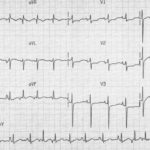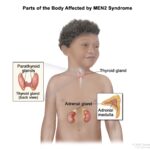Multifocal Motor Neuropathy (MMN) is a rare, chronic neurological disorder that affects the peripheral nerves, leading to progressive muscle weakness without sensory loss. MMN is often mistaken for amyotrophic lateral sclerosis (ALS) due to its asymmetric motor deficits. However, MMN is treatable with intravenous immunoglobulin (IVIG), making early diagnosis critical.

Causes and Risk Factors
The exact cause of MMN is not fully understood, but it is classified as an immune-mediated neuropathy. Key contributing factors include:
- Autoimmune mechanisms: The immune system mistakenly attacks peripheral motor nerves.
- Anti-GM1 antibodies: Found in most MMN patients, these antibodies disrupt nerve conduction.
- Genetic predisposition: Though not directly inherited, some individuals may have a genetic susceptibility.
- Chronic immune activation: Persistent immune system dysfunction contributes to disease progression.
Symptoms of Multifocal Motor Neuropathy
MMN primarily affects motor function, with hallmark symptoms including:
- Asymmetric muscle weakness: Often starts in the hands or arms, progressing slowly over time.
- Muscle cramps and fasciculations: Involuntary muscle twitching is common.
- Absent or reduced reflexes: Unlike ALS, MMN does not involve upper motor neuron signs.
- No sensory impairment: Patients retain normal sensation despite severe weakness.
- Progression over months or years: Symptoms typically worsen gradually, but early treatment can slow progression.
Diagnosis of Multifocal Motor Neuropathy
Diagnosing MMN involves a combination of clinical evaluation, laboratory tests, and electrophysiological studies.
1. Electrodiagnostic Testing
- Nerve conduction studies (NCS): Identify conduction blocks in motor nerves.
- Electromyography (EMG): Shows signs of denervation without sensory involvement.
- F-wave abnormalities: Suggests motor nerve dysfunction without upper motor neuron involvement.
2. Laboratory Tests
- Anti-GM1 antibody testing: Elevated levels confirm immune involvement.
- Cerebrospinal fluid (CSF) analysis: Typically normal, distinguishing MMN from other neuropathies.
- Serum inflammatory markers: May indicate immune system activation.
3. Imaging and Additional Assessments
- MRI of the brachial plexus: Helps rule out structural nerve compression.
- Exclusion of ALS: MMN is often misdiagnosed as ALS, but key differences exist.
Treatment Strategies for Multifocal Motor Neuropathy
1. Intravenous Immunoglobulin (IVIG) Therapy
- First-line treatment that improves muscle strength and slows disease progression.
- Regular IVIG infusions help maintain motor function.
2. Immunosuppressive Therapy
- Rituximab: An emerging therapy for IVIG-resistant cases.
- Cyclophosphamide and Mycophenolate Mofetil: Used in refractory MMN cases.
3. Supportive Care
- Physical therapy: Prevents muscle atrophy and improves mobility.
- Assistive devices: Braces and orthotic supports help maintain function.
Prognosis and Long-Term Outlook
- Early treatment with IVIG significantly improves outcomes.
- Most patients maintain independence but require ongoing therapy.
- Without treatment, MMN can lead to severe disability.
Recent Research and Future Directions
Current research focuses on:
- Targeted immunotherapies to reduce IVIG dependency.
- Biomarkers for earlier MMN detection.
- Gene-based studies to understand disease mechanisms.
Multifocal Motor Neuropathy is a treatable autoimmune disorder that affects motor nerves without sensory loss. Early recognition and treatment with IVIG are crucial in preventing long-term disability. Advances in immunotherapy and nerve regeneration continue to improve patient outcomes.

